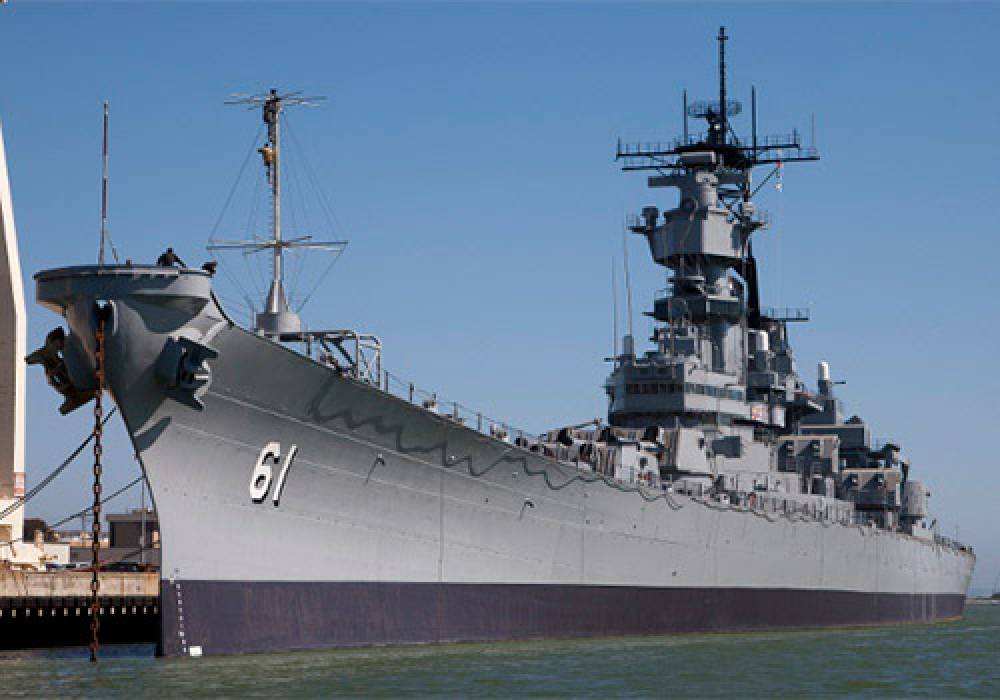Arecont Vision Cameras and Arteco VEMS Software Helps Safeguard USS Iowa Museum

 |
| The USS Iowa management team were conscious of the threat posed by trespassers after-hours |
USS Iowa: A naval treasure
Affectionately known as the “Battleship of Presidents” for having played host to more U.S. presidents than any other battleship, the USS Iowa is one of the most storied vessels in the history of the Navy. Originally commissioned in 1943, the Iowa saw significant action during both World War II and the Korean War. One of the battleship’s first missions was to escort President Franklin Delano Roosevelt across the Atlantic in November of that year for a critical meeting between the allies at the Tehran Conference, which was also attended by Soviet leader Josef Stalin and British Prime Minister Winston Churchill.
In early 1944, the Iowa was sent to the Pacific Ocean theatre where it would play a pivotal role in some of the key battles of the war. When the Empire of Japan officially surrendered aboard the USS Missouri in September 1945, the Iowa was also in Tokyo Bay broadcasting the ceremony to the world. The Iowa and her crew would continue to serve the nation for another four decades before being decommissioned for the last time in 1990.
Given the ship’s rich legacy, it was eventually relocated to a permanent berth at the Port of Los Angeles in 2012 and converted into a museum. Visitors can now stroll along the decks of this American icon from a bygone age and get a first-hand look at the 16”/50 calibre guns that earned the Iowa its nickname of the “The Big Stick” as well as other historical artefacts on board the battleship. Of course, turning a vessel that stretches over 880-feet long and contains numerous rooms and compartments into a tourist attraction comes with its own set of unique security challenges.
Security challenges
The job of securing the Battleship USS Iowa museum is the responsibility of Security Manager Michael Dahl, a former law enforcement officer who was asked to take over the full-time security operations for the museum following his stint as a volunteer aboard the ship. While the museum has yet to experience a major security event during its brief existence, the threat posed by trespassers after-hours or a visitor wandering off the beaten path is not lost on Dahl and the rest of the management team at the museum. However, aside from having a small number of consumer-grade, off-the-shelf security cameras placed in strategic areas, there was not any real video surveillance infrastructure to speak of on board the ship.
That changed approximately one year ago when David Canfield, the museum’s vice president and CIO, who also happens to be a veteran of the high-tech industry, decided they needed to significantly upgrade the surveillance system and install a solution that would more adequately address the facility’s needs.
 |
| Arteco and Arecont Vision donated the respective technology solutions for the USS Iowa project |
“We wanted to install cameras to monitor the exterior of the ship, particularly when we’re not open to the public, so we can monitor our gangways to see if anybody does try to access the area,” said Dahl. “Also on the inside of the ship, we wanted to make sure we didn’t have our visitors, as well as our crew members who are volunteers, getting off the designated routes and into areas where we didn’t want them. There are some sensitive areas where, if you don’t know what you’re doing, they could be hazardous.”
Arteco’s VEMS solutions
After speaking with CV Reps, a local manufacturer’s representation firm, Dahl and the museum’s leadership team decided to install a system with the Arteco Next video event management software (VEMS) and a network of Arecont Vision cameras. Because the battleship museum is a non-profit organisation, both Arteco and Arecont Vision donated the respective technology solutions for the project.
A total of 11 high-definition IP cameras have been installed on the Iowa since the project got underway in mid-2015. At the beginning of 2016, Dahl was able to bring the Arteco software online and he has been extremely impressed with its performance. Leveraging the video analytics suite provided by Arteco Next, Dahl has been able to set up an alert within the VEMS client that notifies him when certain physical boundaries are crossed by people on board the Iowa.
“With the Next software I’m able to configure alert areas after hours — so if anybody were to try to come on the ship it would alert me,” added Dahl. “We also have an alert for our cash-handling room just outside our vault that is set up so that anytime anybody goes through that door, it lets me know.”
User-intuitive video software
Because Dahl, who has sole responsibility for running the surveillance system, is a relative novice when it comes to operating today’s surveillance technology, it was also important that the video software the museum deployed be user-intuitive so that he could bring himself up to speed quickly. After only a few hours of training on the Logic Next platform, Dahl was able to learn the basics of the software and familiarise himself with its more advanced settings.
Arteco NEXT VEMS allows users to take full control of a video surveillance system from anywhere, quickly and easily. With NEXT’s specifically designed graphical interfaces, video retrieval, direct management of alarms, video analytics or access control events are made easy from the start. This enables users to focus on taking hold of the benefits delivered by the system immediately, rather than waiting for training.
In the future, Dahl plans to deploy more cameras to keep the USS Iowa and its rich history secure. “I have several locations where I still want to deploy cameras; it’s just a matter of being able to procure them and deploy them as resources allow,” said Dahl.














